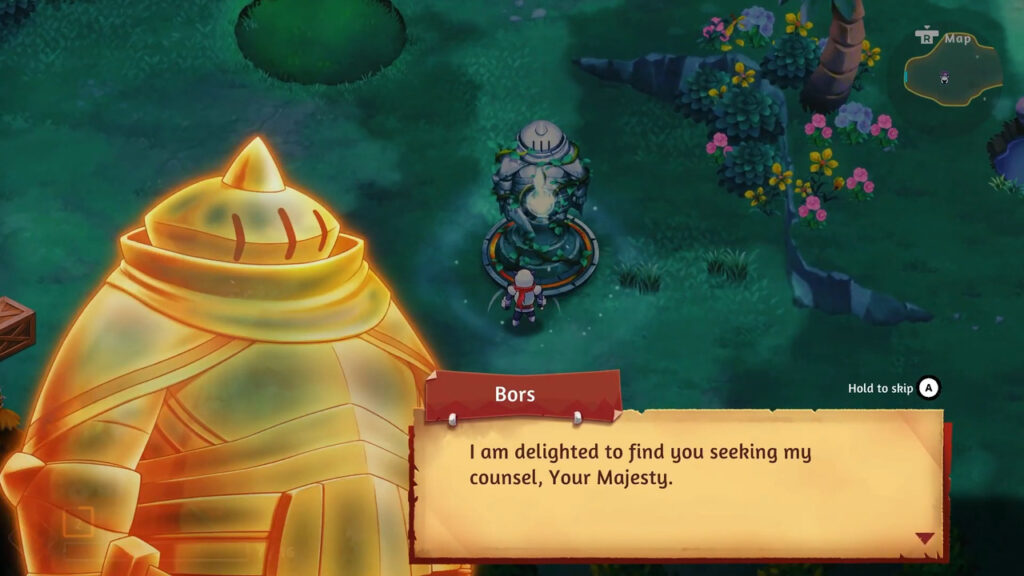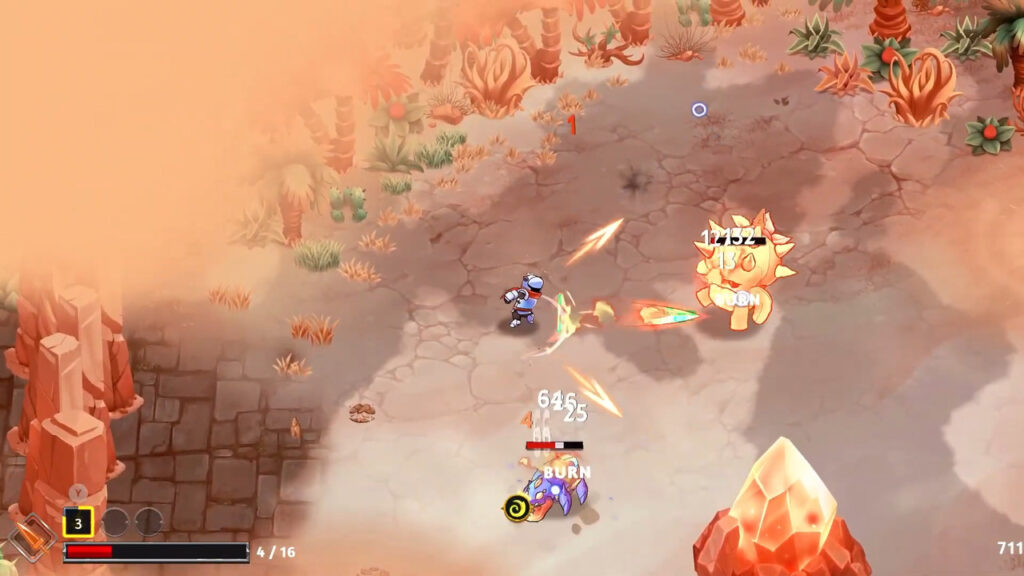
Developer: Gambir Game Studios
Publisher: PQube
Platforms: Switch, PC, PS5, Xbox Series X|S
Tested on: PC
Knight vs. Giant: The Broken Excalibur – Review
Ever since its inception, Gambir Game Studios’ focus has been mainly on mobile games and free browser games, but with its latest game, the Indonesian studio is trying to cement itself as a developer for PC and consoles as well. Knight vs. Giant: The Broken Excalibur certainly is the studio’s most ambitious outing yet, and with an established publisher like PQube behind them, this might just be the title that pushes Gambir Game Studios into the consciousness of the gaming public. Can Knight vs. Giant deliver on what audiences expect or did Gambir Game Studios bite off more than they could reasonably chew?
Story
Based on the legend of King Arthur and the Knights of the Round Table, Knight vs. Giant features plenty of characters you’re probably already familiar with, but the story itself is quite different from what you may remember. Things start out familiar enough, with Arthur and his loyal knights on the quest for the Holy Grail. Things go horribly wrong, however, when the band of men runs into a Void Giant, who manages to slaughter Arthur and his men as well as shatter the legendary sword Excalibur. The only one able to rectify this situation is Merlin himself, who banishes the Giant to the Astral Dimension. In doing so, however, he inadvertently transports the entirety of Camelot here as well, which makes the situation considerably worse. Merlin’s last remnants of hope now lie in the hands of the newly resurrected Arthur and the spirits of the fallen knights, who must work together to return Camelot to its rightful dimension and bring everything back to normal.
Graphics
For the most part, Knight vs. Giant’s hand-drawn art looks like it was pulled straight from a fairy tale book, with the bosses and environments in particular standing out as highlights. However, there are different art styles in play here, with grunts and Arthur himself sticking out like sore thumbs, with their thick outlines and flat shading compared to some other character portraits. It doesn’t help that the faceless, simplistic design for Arthur himself isn’t particularly memorable or appealing. The keyframe-based character animations resemble the same “paper doll” visuals we’ve seen before in games like Fallen Legion: Revenants. While this does mean that the game isn’t too taxing visually, it doesn’t really impress, and the clashing aesthetics don’t help either.
Sound
Fortunately, the audio fares a little better than the visuals, in terms of consistency at least. Cutscenes are fully voiced, with above-average performances, and the music isn’t too shabby either. Admittedly, we could have done with some more variety, but as you’ll find out, the same can be said for other aspects of Knight vs. Giant as well.
Gameplay
Hades set a new standard for roguelite action games, and we’d be lying if we said we didn’t see the influence of Supergiant Games’ masterpiece in Knight vs. Giant. All the familiar elements are here, from fast-flowing hack-and-slash action to an extensive upgrade system. Taking control of Arthur, you’ll clear room after room of enemies, gradually unlocking new abilities and upgrading them as you make your way to the next robust boss. Being a roguelite title, level layouts are randomly generated, so that no two runs of a stage are the same. The Kingdom of Camelot acts as the game’s main hub, and gradually new buildings and services can be unlocked by completing objectives and spending gold. So far, so familiar, but where Knight vs. Giant tries to set itself apart from other titles in the genre is how the spirits of Arthur’s fallen knights come into play. Arthur himself comes equipped with a standard attack and magic skill, as well as a dodge, but the game would be rather boring if you were limited to just a basic attack. Knight spirits function as equippable skills and abilities, and you can mix and match these to suit your preferred build for Arthur, although you are limited to one attack and one skill at the same time.
A large part of what makes Knight vs. Giant fun initially is experimenting with different builds, and the game encourages this through its upgrade system. As you explore the rooms, you’ll run into statues of the knights, which enable you to improve your skills as well as your weaponry. Additionally, Arthur is rewarded with gold and purple orbs upon room completion. Gold can subsequently be spent on permanent upgrades for the Knights at the game’s hub area. Purple orbs also act as currency, but cannot be used for permanent improvements. Instead, these are spent on consumables like healing potions and items that offer temporary buffs, but these cannot be carried over to future runs. Of particular note is how polished and streamlined Knight vs. Giant is. Small touches like destroying crates by simply walking through them and holding the attack button down instead of having to mash it to continuously attack might seem like they wouldn’t have much of an impact on paper, but after prolonged sessions of dungeon crawling, your hands will be thanking you. Likewise, you are able to teleport back to rooms you’ve previously cleared, which comes in handy if you don’t feel like backtracking to places like a one-time-use healing fountain.
That said, there are design issues that prevent Knight vs. Giant from claiming the same legendary status as Hades. While the random stage layouts keep things somewhat fresh, there simply isn’t enough variety when it comes to environments and enemies. In combination with difficulty spikes, which are quite prevalent, this means that Knight vs. Giant can start to feel like a grindfest fairly quickly. More enemy variety and mini-bosses would have been welcome here, as access to upgrades is often walled by those aforementioned difficulty spikes. In fact, there were moments when we had more gold orbs than we could spend on every available upgrade simply because we couldn’t get past a specific point where new upgrades would become available. Knight vs. Giant is a very difficult game at times, but most of that difficulty can be alleviated simply by improving Arthur’s stats and abilities rather than letting players think outside the box. The game lacks moments of surprise or innovative level design, which are typically genre highlights. The foundation here is good, but with Knight vs. Giant failing to truly grasp what made its competitors so great in the first place, the game presents us with an interesting contradiction: it both feels too short, due to the limited amount of levels, while also overstaying its welcome through difficulty spikes and walling upgrades behind grinding.
Conclusion
Our initial impressions of Knight vs. Giant were very good, but the more time we spent with the game, the more the cracks began to show. There are plenty of good elements here, with interesting ways to customize Arthur, streamlined and satisfying combat, and an interesting take on the Arthurian legend. However, the game is bogged down significantly by a lack of variety when it comes to levels and enemies, which it doubles down on through difficulty spikes and walling content behind grinding. As a demo of what Gambir Game Studios is capable of, Knight vs. Giant is impressive, but if you’re looking for a roguelite action game that is fun for longer than an hour, we suggest you just boot up Hades again.









No Comments